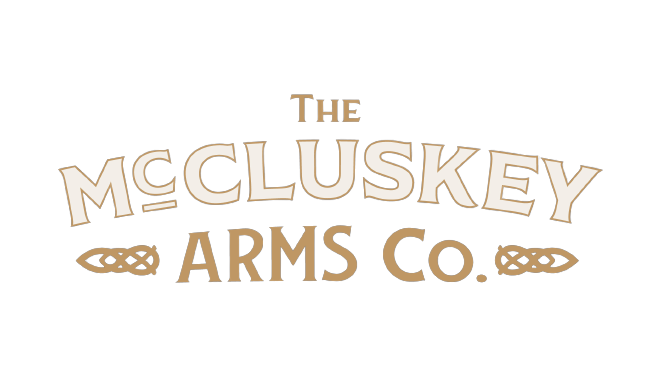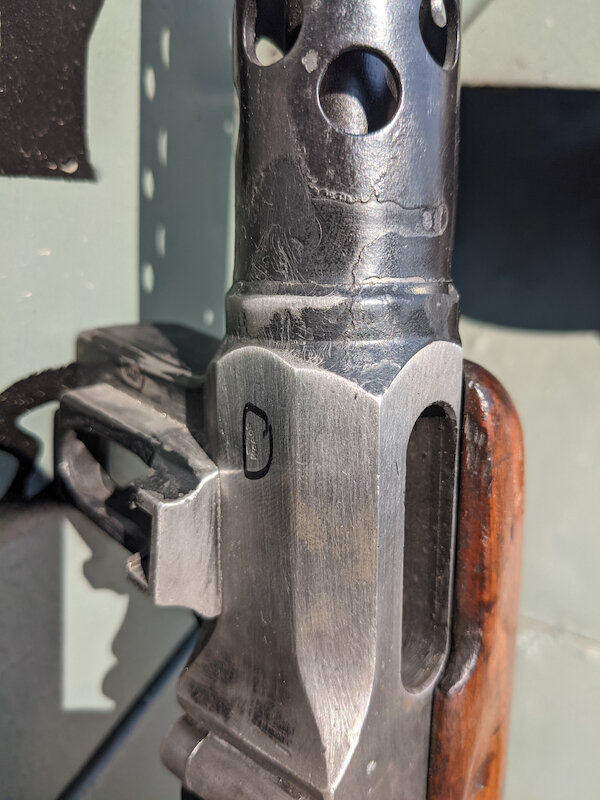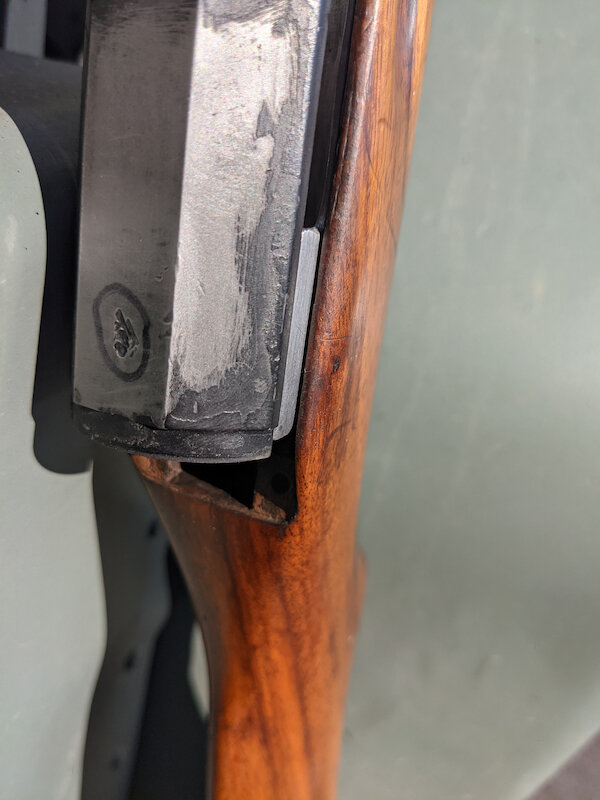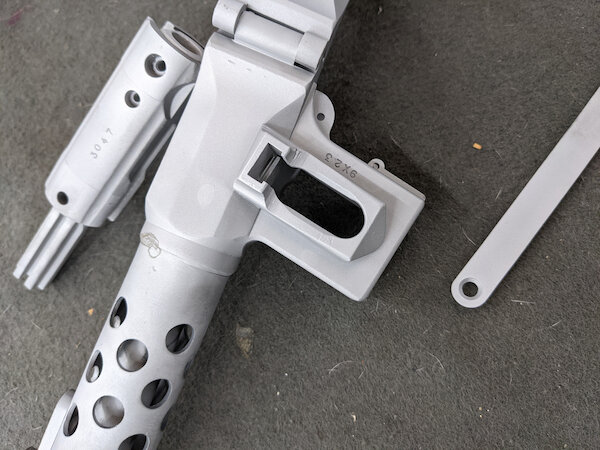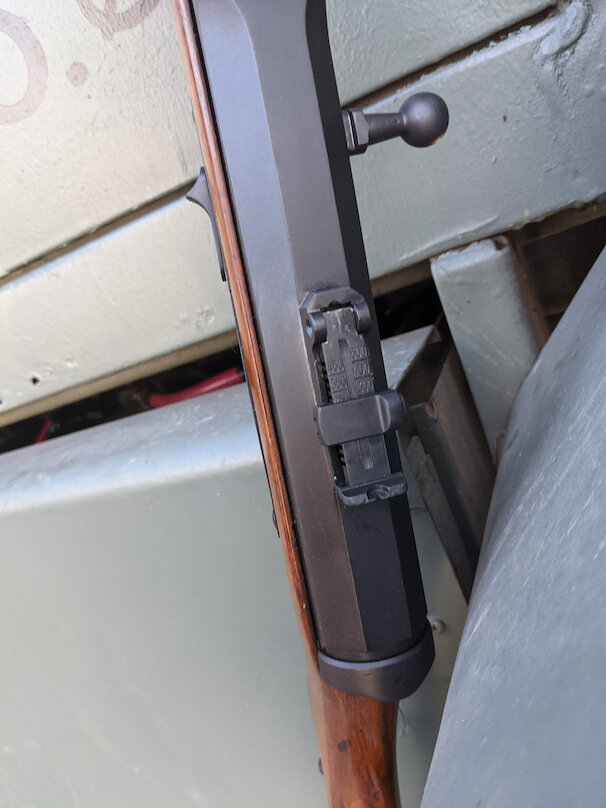Feat of the Week: The Rare MP30
Refinishing the Rare MP30
The MP30, produced in 1929 and more commonly known as the MP34, is relatively rare today for many reasons: 1) it was developed in secret, 2) it was not mass produced, and 3) it was quickly phased out of use. Because parts kits are hard to come by, this customer bought one when he had the chance. As a history buff, he was excited to find this rare submachine gun with an interesting history.
But when he sent it off to get built, he unfortunately didn’t get the result he was looking for. The gun came back with a cracked stock and bad welds. It wasn’t structurally solid, and the parts kit was so poorly built that the bolt broke off. Even worse, the builder had also stamped waffenamt marks with Nazi swastikas all over it.
Not only did this guy now have a gun with Nazi stamps, but the stamps were historically inaccurate. The MP30 was developed prior to the rise of the Nazis in Germany and quickly discarded by them when World War II began.
At some point, the customer had brought it to another gun shop where they fixed the structural issues. While they got the gun functioning again, the stock still needed to be repaired and the Nazi proof marks needed to be removed.
When the customer heard about our shop, he asked us to repair the stock, remove the marks, and blue it for him. We counted twelve stamps in total—seven visible on the outside of the gun. The gun was also stamped 9x23 (which was the original caliber of the MP30) but was chambered in 9x19. Though that part of the gun was historically accurate, stamping the wrong caliber can be dangerous. So we removed the stamping but didn’t restamp in 9x19 in order to keep with historical accuracy.
Before getting too far into the project, we welded up one of the proof marks, sanded it down, and test blued it to make sure the finish would be consistent between metals. Once we knew the bluing would be consistent between the welded metal and the original metal, we began repairing the stamped areas.
To remove the inaccurate stamping, we welded each of them up and sanded them down. Welding on a firearm is a precise process—especially when it’s welding tiny proof marks.
Once each of the Nazi stamps were filled and sanded, we began prepping all of the metal. We polished it so that all of the surfaces had the same finish. Finally, we blued it—you can learn more about that process here—and the customer absolutely loved the final product.
MP30 History
Germany’s Secret Rearmament
During the period after World War I, Germany was subject to arms manufacturing restrictions. The Treaty of Versailles prevented them from producing weapons including small arms like submachine guns.
Yet, during the interwar period and despite the treaty, Germany began to rearm their country in secret. The scale of the operation, which began during the Weimar Republic and continued into the Third Reich, prepared the German military to invade and dominate its neighboring countries at the beginning of World War II.
To conceal their rearmament, Germany used front companies. Rheinmetall was a supplier of ammunition for Germany during World War I, and in 1925, the German government acquired the majority of the company. In 1929, they acquired a Swiss company and used it to secretly develop a new submachine gun, the MP30.
But, because the Swiss company was not setup for mass production, Rheinmetall purchased a controlling interest in Steyr and had the MP30 manufactured in Austria (yet still sold through the Swiss company). There it became more commonly known as the MP34 and was first adopted by the Austrian police and military.
MP30 during WWII
When Germany annexed Austria in 1938, the German army inherited most of the MP30s and MP34s. The idea of Anschluss, uniting Austria and Germany to create a Greater Germany, was a long-standing concept even prior to Nazi Germany.
Before World War I, many people in both Germany and Austria were angry that Austria was excluded from German unification in 1871. The two countries tried to unite with Austria after World War I, but the Treaty of Versailles prevented the union.
So, when the Nazi forces entered Austria in 1938 and annexed the country, they were greeted with open arms. And they were given small arms, including the MP30.
But, as World War II began, the Germans could no longer afford to produce the MP30 because it was built with the best materials and the design was not suited for mass production. In fact, it had earned the nickname the “Rolls Royce of submachine guns”.
So, Steyr transitioned to production of the MP40 in 1940 because it was a more basic design and was cheaper to mass produce.
Because of the cost, much like many guns during wartime, the MP30 was forgotten. It remains a rare sight today, and it was quite the treat to work on one of these. In fact, this build was the only MP30 I have ever seen. The customer was extremely happy that we were able to restore it to match its proper history. And we were happy to remove those damn Nazi marks.
Next Up
We hope you enjoyed this week’s gunsmithing feat. Thank you for following along! We post new blogs every Tuesday at 10am PST. Please comment for any content you want to see.
If you loved the services you saw today, check out our online store! You can start shopping by clicking here. Or drop us a message here. We look forward to meeting you and gunsmithing for you.
Please subscribe to our blog below and don’t forget to follow us on social media!
